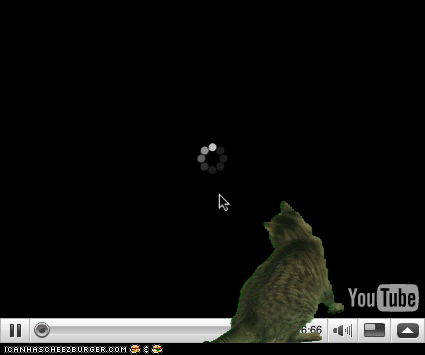Who is Your Audience?
One of the first questions I ask for each trailer is: "Who is the audience for this?" The first thought might be: "Everyone, of course!" But as the saying goes, if you try to make something for everyone, you make it for no one. How do you understand who the audience is for a trailer, and why is it important?
Who is the audience?
I touched on this briefly in my post about how lessons from stand-up comedy relate to making trailers; to know the audience is to know how to cater to what they want to see. Here are three factors which affect audience expectations for a trailer:
Where the trailer is playing
Time relative to the game's release
Player demographic/psychographic
Each of these affect what should be in a trailer, and how to present it; there are both overlapping solutions, and individual concerns to address.
Where is the trailer being watched?
1. Live events (e.g. E3, awards shows, livestreams)
These are the most fun to make trailers for because there's a captive audience who have virtually no idea what they're about to see. This audience expects something new and exciting, because this is a curated selection of trailers, so it's important to make the trailer stand out as much as possible amongst the others which might be for very similar games.
Aside from the fans, consider the people watching and reporting on the live event via live-tweeting or writing articles. They're looking for unique, easy to summarize qualities. Consider how much more noteworthy: "THAT GOOSE GAME!!!" sounds compared to "That post-apocalyptic open world game!"
The lesson here is to go hard on unique qualities of the game, and to keep the message SIMPLE. Better for the audience to remember one thing well, than to get a weak impression of three things.
2. Social Media
Here I'm lumping together Twitter, Facebook and Instagram; this is the toughest crowd because with the flick of a finger, the trailer is suddenly gone. On all these platforms, videos show up on a feed, often with no sound. These trailers need to be visually exciting as soon as humanly possible to grab attention; it's why online movie trailers have those annoying teasers for the trailer you're about to watch. It's also why they all have captions on screen. If it's feasible to make a separate trailer version for these platforms, it's worth it.
3. YouTube
For YouTube and social media, the audience always comes in with some prior knowledge because they got to the video somehow. At the very least, they know the title, the thumbnail and duration. This doesn't sound like much, but it's still enough to set some expectations. On YouTube the trailer will also be surrounded by other videos in the search results, and suggested videos; you're fighting against all the other shiny objects nearby.
The lesson here is the same as social media platforms; Start strong, and don't waste time. The good news for YouTube is the sound won't be turned off by default.
4. Digital storefront
This trailer is being watched by someone who is literally a button press away from potentially buying the game. This trailer can't afford to be coy with details like in a teaser-y announce trailer. Depending on the game, the trailer either has to be a good summation of the experience, or the feature rich "What is the content?" trailer. Just let them know what they're getting.
Time to release
Someone watching a trailer for a game a year or more away from release needs to get excited, but not necessarily know enough to make a definitive purchasing decision. Best case scenario here is to get them to wishlist a game on Steam, subscribe to a newsletter, join a Discord or follow on social media. This audience wants novelty, an idea to hold onto like: "First person shooter where time only moves when you do."
1. A few months to release
This person has sat on the idea for a little while, and held on enough, but needs some more in order to get really excited. What will playing the game be like? What do I want to do when I get the game? This audience still needs their expectations played with a little, and everything should still not be revealed, but they need to know enough for their brain to start thinking: "When I get the game, I can't wait to try out this item, or visit this area, or xyz."
2. Release
Okay, now things are serious, am I going to put money down for this game or not? Especially at higher dollar amounts, this audience really does need to know what they're in for. They need to be very invested in seeing the rest of the story, or they need to know this game is going to keep them occupied for a while. It doesn't have to be as literal as a title card which says "OVER 40 HOURS OF CONTENT." but there has to be understanding of the scope.
3. Post-release
This is for the fans of the game. The whole thing is a known quantity, there are no unknowns left in the main game. They just need to know if they're going to get more of what they like, and how much of it. If there's a time for title cards with bullet points, this is the time. There's less of a gross feeling of a hard sell when the audience is nothing but fans.
Player Demographics/Psychographics
This is where we get very specific about who is watching the trailer. There are millions of people who play games, and they all have specific backgrounds, characteristics, wants, needs, and biases. This is a deep well, which entire businesses are dedicated to studying, but here's a general overview for the purposes of game trailer audiences.
1. The casual players
These are the people who aren't on video game forums arguing about the best rogue-likes, immersive sims or procedurally generated levels. This audience didn't even understand half of that previous sentence. Trailers made for this audience need to avoid ultra-specific video game terminology; those words will just go in one ear and out the other. If they don't play a lot of games, the trailer needs to connect with them in a way they'll understand, but not talk down to them.
It's important to recognize the separation between what you do in a game, and how you do it. The what is the bigger picture, and the how is only relevant for people when they get their hands on the game.
2. Fans of the game
These are fans who are already invested and just want more. So promise them more, show them what they're going to get, and that it will be worthwhile. For example, I made my Spelunky 2 trailer for Spelunky fans I knew were dying to see any gameplay. Spelunky fans don't need to be taught about the game, so I didn't bother trying; this freed me up to cut to the chase, and show as much as possible.
Trailers for DLC can be made with fans of the game in mind, because it's less likely for the audience to be comprised of people who haven't even bought the game yet.
3. Fans of the genre
This is a tricky one because this is an audience who likes a specific sort of game, and might be content with what they're playing. A trailer for a new survival game isn't going to entice a survival game fan with a title card which says: "Crafting!"
Just like with restaurants, if someone is content eating at their favorite Mexican food place, they're not going to try something new unless they hear something unique like a Mexican/Korean restaurant (assuming they also like Korean food)
In this example, the new survival game needs to quickly establish itself as within that genre, and then just as quickly tout its unique qualities.
4. Not fans of the genre
There are a lot of games which fit into a niche, for example: battle royale games, survival games, first person narrative adventures, puzzle games, interactive fiction etc. There are people who are fans of these games, people who might dabble, and others who decided those games are not for them. Worrying about that last group of people can be a lot of wasted effort.
Imagine a quiet, contemplative game making a bombastic, and exciting trailer in an effort to appear more exciting. People looking for the quiet game would be turned off by the marketing, and people looking for the exciting game would at best purchase the game, and not get what they were looking for.
It's never a good idea to lean hard into something the game is not. At the same time, this doesn't mean a trailer needs to show everything in a game. There might be a game mechanic which is part of the game, but could turn off someone if featured too heavily in the trailer.
For example, it would be very easy to make a trailer for Super Mario Odyssey which shows Mario repeatedly failing incredibly difficult jumping puzzles. Is falling and losing all your energy a big part of Super Mario Odyssey? Absolutely (at least, if I'm the one playing) but it's not representative of the core experience of playing it.
Or imagine if Firewatch's trailer focused a lot on reading the backs of books and notes instead of the dialogue. A person could easily watch that trailer and think: "Ugh, I hate these games where you just pick things up and examine them." — There is no one-size-fits-all approach to trailers, but being as specific as possible by thinking about who is watching will help guide the necessities of each trailer.
To recap, the most basic things to consider are:
Where is this trailer being watched? (Live, online, social media etc.)
How long before or after the game's release is this trailer coming out?
Who is watching, what do they know, and what do they want?











